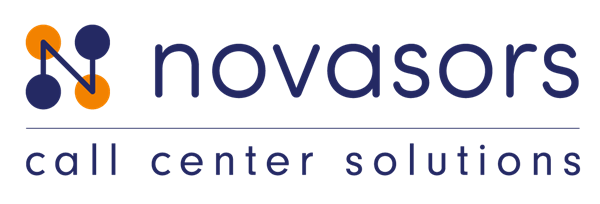While the terms “call center” and “contact center” might sound interchangeable, the services offered between the two differ significantly. Call centers are to contact centers what voice-only flip phones are to today’s smartphones — the former is the simple predecessor of the modern, sophisticated contact center. Call centers offer customer support through voice communication only, while contact centers provide customer support through multiple communication formats. Read on to learn more about how these two types of customer service solutions differ and which is ideal for your business.
The Traditional Model
If you’ve ever called customer service with a question about your credit card or a computer problem, for example, you’ve probably dealt with a call center. This is a location that receives and places a large number of phone calls to and from businesses customers. This solution allows a business to offer recorded and documented customer support to many people.
Agents handle support issues such as receiving and processing orders, tracking the status of an order, following up with customers post-purchase, and providing technical support. While businesses once preferred local call centers, most companies today outsource their customer service to foreign countries like India and the Philippines.
Features and Benefits
Agents typically interact with customers solely through voice communication, either a public switched phone network or Voice over IP (VoIP). They may designate operators as inbound, outbound, or blended (handles both inbound and outbound calls) agents.
A call center, especially because it can be outsourced to a third party, can alleviate the demands on your business. This allows you to concentrate on core, strategic activities instead of customer support functions. Unlike a contact center, call centers handle phone calls only, which makes them substantially cheaper to run. For businesses that only need inexpensive telephone customer support, using the traditional model for service might be the right choice.
An Introduction to Contact Centers
This type of communications solution handles the same sorts of functions as the aforementioned communications solution, but it does so with multiple communication channels, not just voice. In addition to telephone communication, a contact center handles mail, email, social media, live chat, and fax — all possible contacts with customers. In this way, every contact center is also a call center, but call centers are not necessarily contact centers.
An Upgrade to Consider?
In our digital age, live customer support is an increasingly important factor in customer satisfaction rates. These specialized agents can engage with customers in almost any format, from snail mail to web to mobile. However customers want to engage with your business, this type of communications solution can accommodate it.
In an era when the telephone function of phones is becoming their least important feature, businesses need to adapt to stay connected with customers. Younger generations have a particularly powerful aversion to phone calls, which means having only a traditional communications model might deter or alienate customers.
Likewise, a Kissmetrics study found that live chat support offers significantly shorter wait times than telephone support and is much cheaper. Live chat is equally important to customers — in the same study, 44 percent of customers said having their questions answered through live chat during a purchase is the most important feature a site can offer. Customers are also 63 percent more likely to return to a site with live chat. While more expensive than a call center, only a contact center can offer the ability to communicate with customers in these critical ways.
Clearly, the two are not synonymous with each other. Both options have unique pros and cons, and which is right for you will depend on your budget, business objectives, and customer base.








